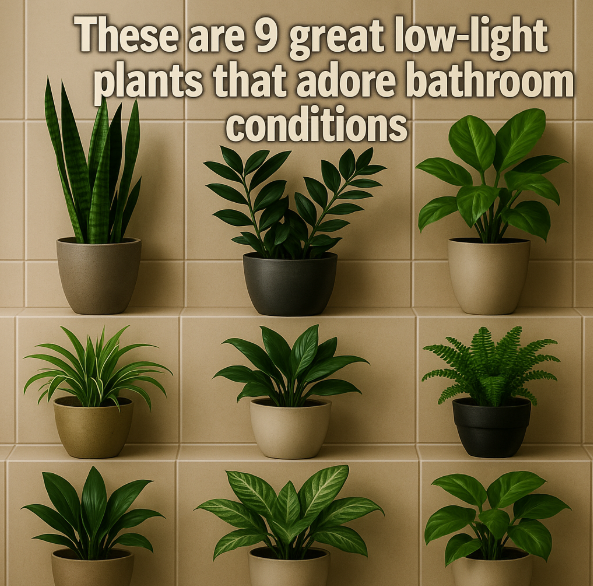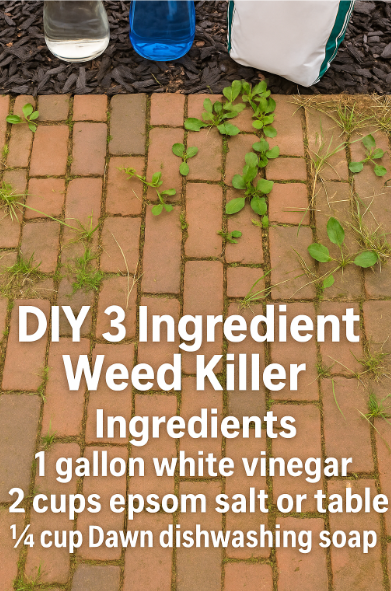9 Best Low-Light, High-Humidity Plants for Your Bathroom Oasis
Table of Contents
- Introduction
- Benefits of Bathroom Plants
- The 9 Best Low-Light, Humidity-Loving Plants
- Placement & Care Guidelines
- Pro Tips for Thriving Bathroom Greens
- Common Issues & Solutions
- Related Articles & Internal Links
- FAQs
- Conclusion
1. Introduction
Bathrooms—often dimly lit and steamy—pose challenges for many houseplants. Yet the combination of high humidity and indirect light can mimic tropical understories, making them perfect for a select group of resilient species. In this 2,500-word guide, we introduce nine low-light, humidity-loving plants that will transform your bathroom into a lush, health-boosting retreat. You’ll learn identification details, ideal placement strategies, detailed care routines, pro tips for maintenance, solutions to common pitfalls, and internal links to deepen your indoor-jungle expertise.
2. Benefits of Bathroom Plants
- Air Purification: Many houseplants filter VOCs (volatile organic compounds) from soaps and cleaners.
- Humidity Regulation: Transpiration helps stabilize moisture levels, reducing mold risk and dry skin.
- Stress Reduction: Biophilic environments support mental well-being and relaxation.
- Aesthetics & Ambiance: Green foliage softens hard surfaces and adds a spa-like feel.
3. The 9 Best Low-Light, Humidity-Loving Plants
3.1 Snake Plant (Sansevieria)
Light: Thrives in very low—to moderate—indirect light.
Water: Allow soil to dry between waterings; water sparingly to avoid root rot.
Humidity: Tolerates high humidity but does equally well in drier air.
Renowned for its architectural, upright leaves and near-indestructible nature, the snake plant is perfect for bathrooms with minimal natural light. Its thick leaves store water, making it tolerant of irregular watering cycles.
3.2 ZZ Plant (Zamioculcas zamiifolia)
Light: Low to bright, indirect light.
Water: Drench and let soil dry out completely before rewatering.
Humidity: Prefers moderate to high humidity; avoid drafts.
ZZ plants feature glossy, waxy leaves that reflect bathroom lighting beautifully. Their rhizomes store moisture, which allows them to endure long dry spells—ideal for infrequent watering schedules.
3.3 Pothos (Epipremnum aureum)
Light: Low to bright, indirect light; avoid direct sun.
Water: Water when top inch of soil is dry.
Humidity: High humidity accelerates growth and keeps leaves lush.
Pothos vines cascade gracefully from shelves or hanging baskets, purifying air by removing formaldehyde and benzene. Variegated cultivars (e.g., ‘Marble Queen’) add visual interest under artificial light.
3.4 Spider Plant (Chlorophytum comosum)
Light: Low to moderate, indirect light.
Water: Keep evenly moist; avoid soggy soil.
Humidity: Thrives in steamy conditions; mist occasionally.
With arching foliage and baby “spiderettes,” spider plants are excellent in hanging baskets. They tolerate bathroom conditions and help remove pollutants like xylene.
3.5 Peace Lily (Spathiphyllum)
Light: Low light; will bloom occasionally under fluorescent lighting.
Water: Soil should be kept moist; drooping signals need for water.
Humidity: Loves high humidity; leaves may brown if air is too dry.
Featuring glossy leaves and elegant white spathes, peace lilies are among the top NASA-ranked air-purifying plants. They reduce ammonia and toluene and add a serene touch to any bathroom.
3.6 Ferns (e.g., Boston Fern)
Light: Low to moderate, indirect light; avoid direct sun.
Water: Keep soil consistently moist.
Humidity: Prefers very high humidity; ideal for steamy showers.
Boston and maidenhair ferns bring delicate texture and lush fronds to humid spaces. Regular misting and a pebble tray with water will keep their fronds healthy and vibrant.
3.7 Cast Iron Plant (Aspidistra elatior)
Light: Very low light—even dark corners.
Water: Water when top inch is dry; tolerant of drought.
Humidity: Adaptable; benefits from humidity but not required.
True to its name, the cast iron plant tolerates neglect, low light, and temperature fluctuations. Its broad, arching leaves create a bold statement in bathrooms with limited window access.
3.8 Chinese Evergreen (Aglaonema)
Light: Low to medium, indirect light; variegated types need slightly more.
Water: Water when top two inches of soil are dry.
Humidity: Prefers moderate to high humidity; avoid drafts.
With colorful foliage patterns ranging from silver to red, Chinese evergreens add a splash of color. They tolerate fluorescent lighting and thrive in the warm, humid environment of a bathroom.
3.9 Philodendron
Light: Low to bright, indirect light.
Water: Water when top inch of soil is dry.
Humidity: High humidity enhances growth and leaf size.
Heartleaf and split-leaf philodendrons—among many varieties—exhibit striking foliage shapes that flourish in humidity. Their vigorous growth makes them excellent for filling empty bathroom shelves or corners.
4. Placement & Care Guidelines
- Light Positioning: Position plants at least 2–3 feet from windows to receive gentle, indirect light.
- Drainage: Use well-draining potting mix and pots with drainage holes to prevent root rot in humid bathrooms.
- Air Circulation: Ensure gentle airflow—crack the door or use an exhaust fan—to reduce stagnation and mold risk.
- Cleaning Leaves: Wipe down foliage monthly to remove soap scum and dust, improving photosynthesis.
5. Pro Tips for Thriving Bathroom Greens
- Rotate Monthly: Turn pots 180° to encourage even growth.
- Use Pebble Trays: Place pots on trays of damp pebbles to maintain humidity without waterlogging roots.
- Supplemental Lighting: Install a small LED grow light if natural light is extremely limited; 12–14 hours daily supports foliage health.
- Fertilization: Feed with a balanced, water-soluble fertilizer at half strength every 6–8 weeks.
- Companion Grouping: Group plants with similar light and humidity needs to create a micro-environment that maximizes moisture retention.
6. Common Issues & Solutions
- Yellowing Leaves: Often caused by overwatering; allow soil to dry out slightly and reduce frequency.
- Brown Leaf Tips: Indicates low humidity or salt buildup; flush soil periodically and increase misting.
- Pest Infestations: Watch for spider mites and mealybugs; rinse foliage weekly and treat with insecticidal soap if needed.
- Leggy Growth: Move plant closer to light source or install supplemental lighting to promote compact form.
7. Related Articles & Internal Links
- Top 15 Low-Light Indoor Plants
- Humidity-Loving Houseplants Guide
- Houseplant Care Basics: Watering, Light & Soil
- Creative Bathroom Plant Decor Ideas
8. Frequently Asked Questions (FAQs)
- Q1: Can I keep these plants in a windowless bathroom?
- A: Yes—species like Snake Plant, Cast Iron Plant, and ZZ Plant can survive even under only artificial lighting. Consider adding an LED grow light for best results.
- Q2: How often should I water bathroom plants?
- A: Most low-light, humidity-loving plants need watering when the top 1–2 inches of soil feels dry. In humid bathrooms, this typically equates to every 2–3 weeks.
- Q3: Will the steam from showers harm my plants?
- A: Steam simulates rainforest conditions and benefits humidity-loving plants. Ensure pots have proper drainage to prevent waterlogging.
- Q4: Do bathroom plants need fertilization?
- A: Yes—feed with a balanced liquid houseplant fertilizer at half strength every 6–8 weeks to compensate for limited soil volume.
- Q5: How do I prevent mold in the soil?
- A: Use pots with drainage holes, a well-draining mix, and avoid overwatering. Improve air circulation with occasional exhaust fan use or by cracking the door open.
9. Conclusion
By selecting one or more of these nine robust, low-light, humidity-loving plants, you can transform any bathroom—windowless or sunlit—into a verdant sanctuary. From the near-indestructible Snake Plant to delicate ferns and vibrant Chinese Evergreens, each species brings unique benefits and style. Pair proper placement, mindful watering, and occasional feeding with our pro tips to keep your bathroom jungle thriving year-round. Ready to elevate your self-care routine with greenery? Start by choosing your first plant, and watch your bathroom come alive! 🌿🛁





